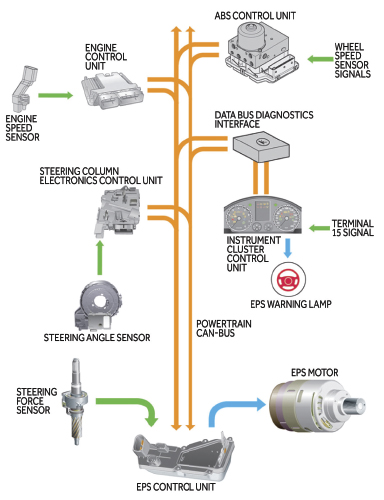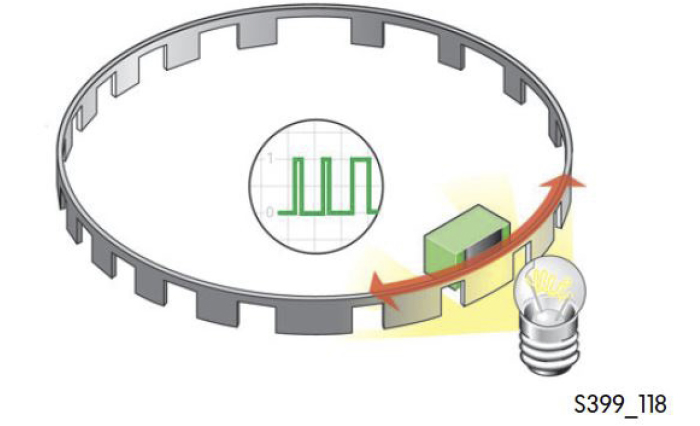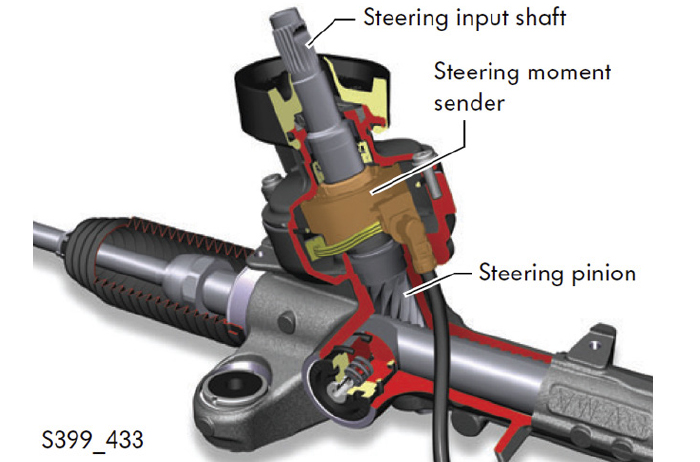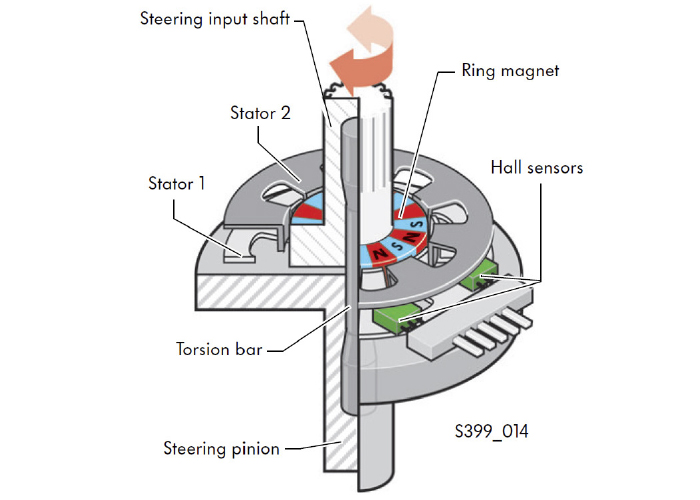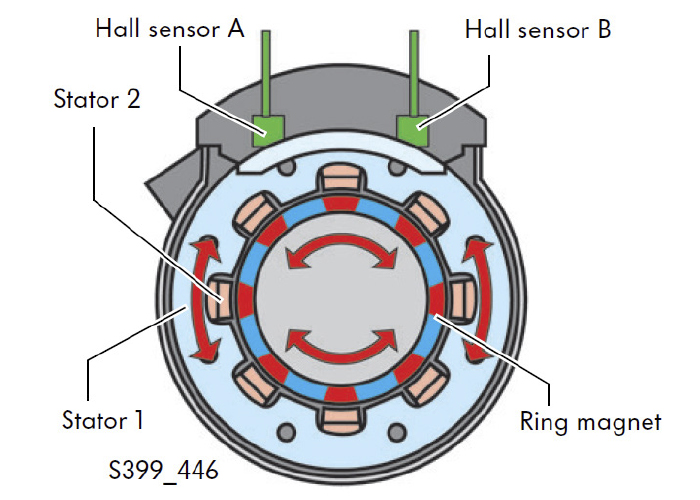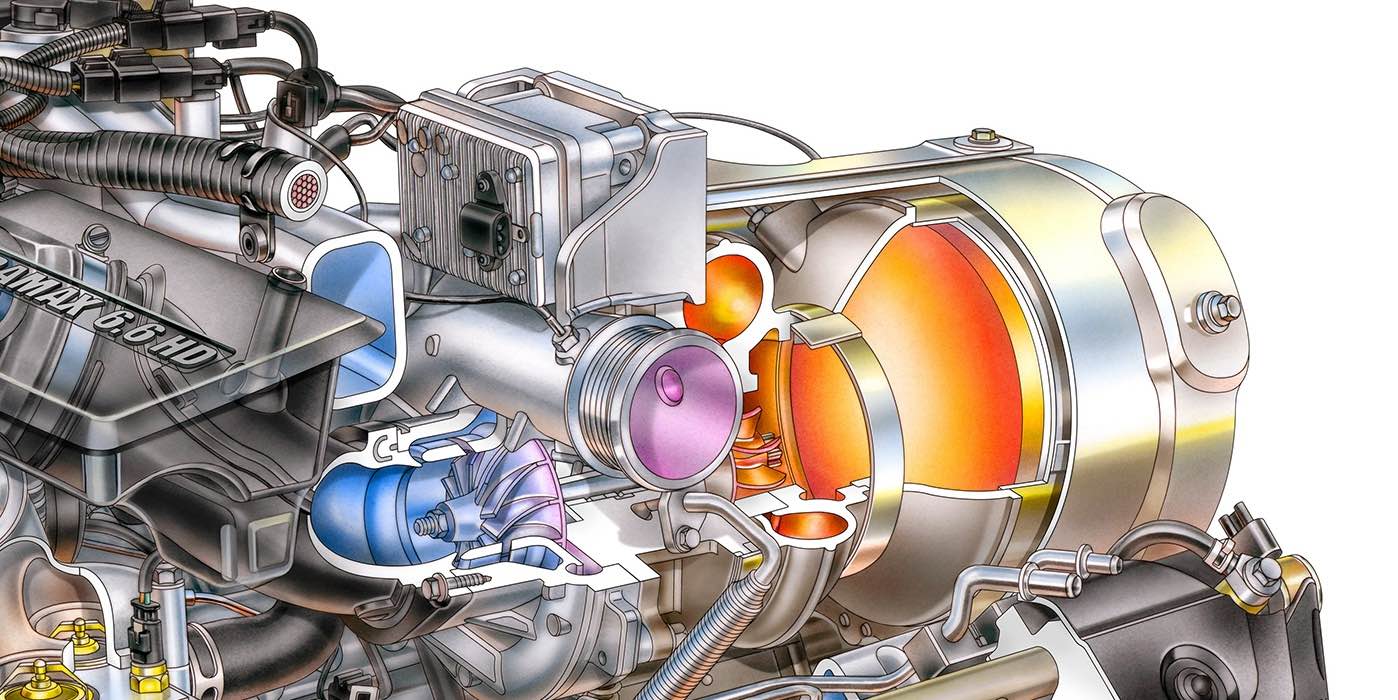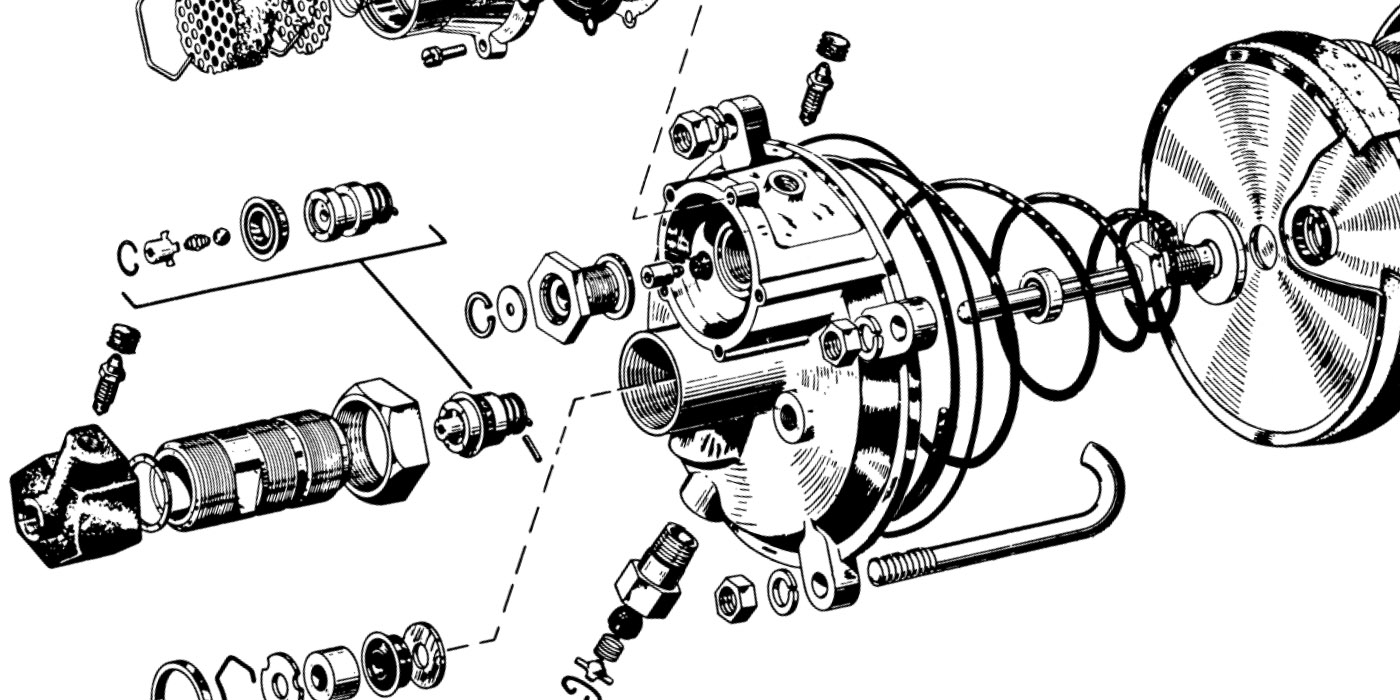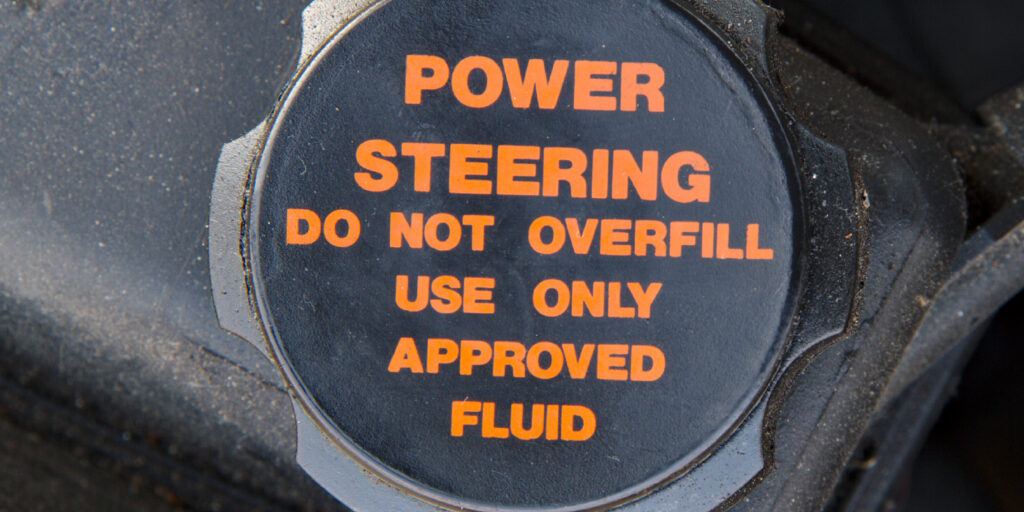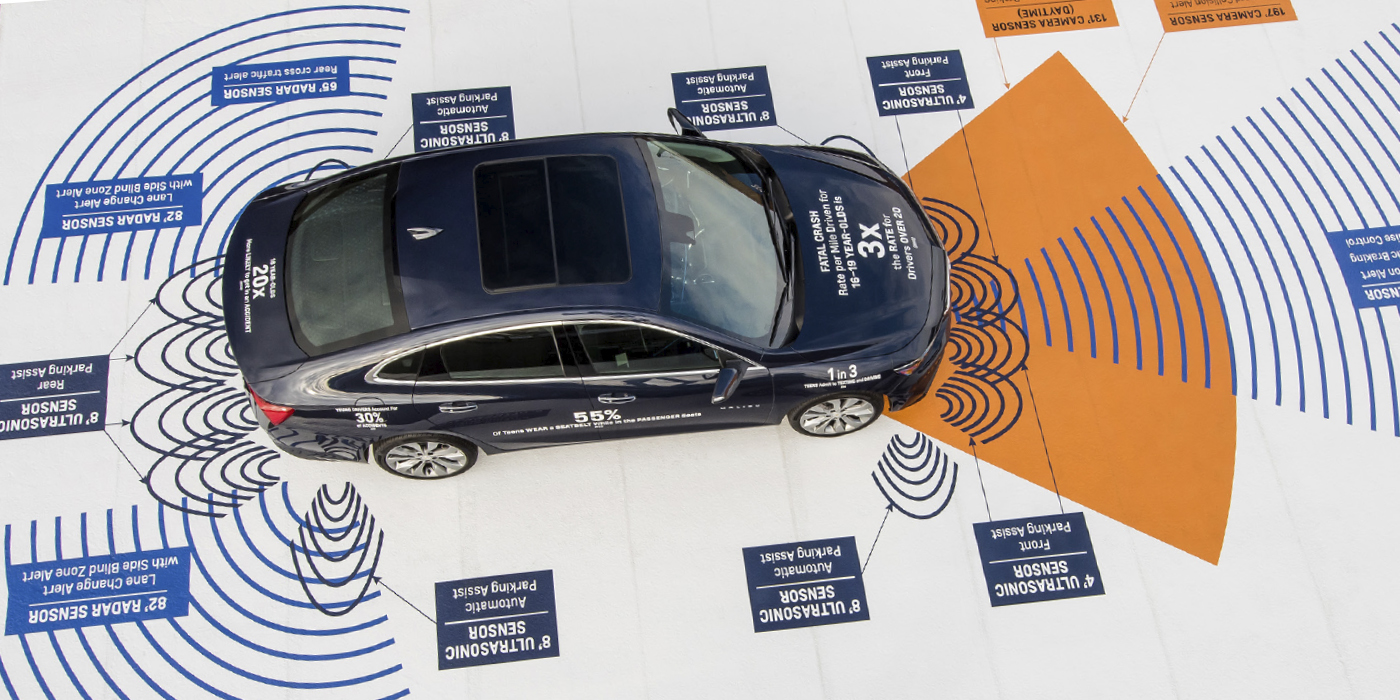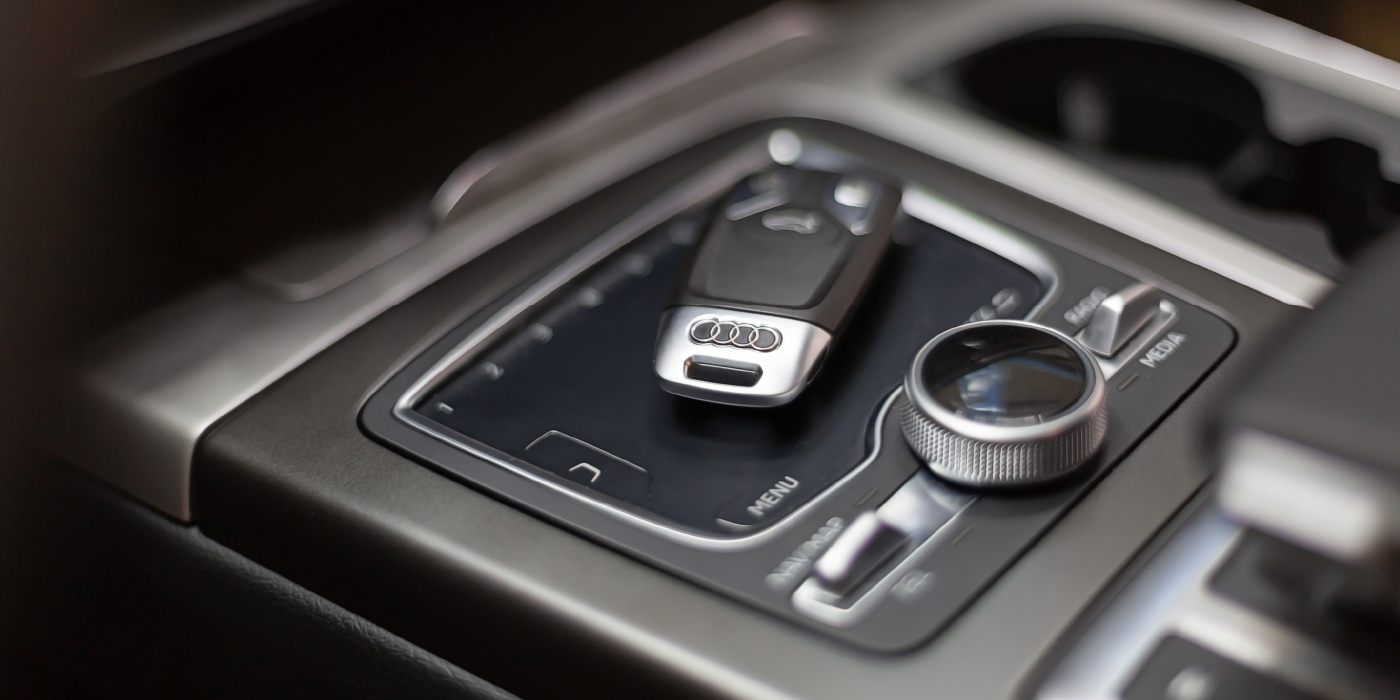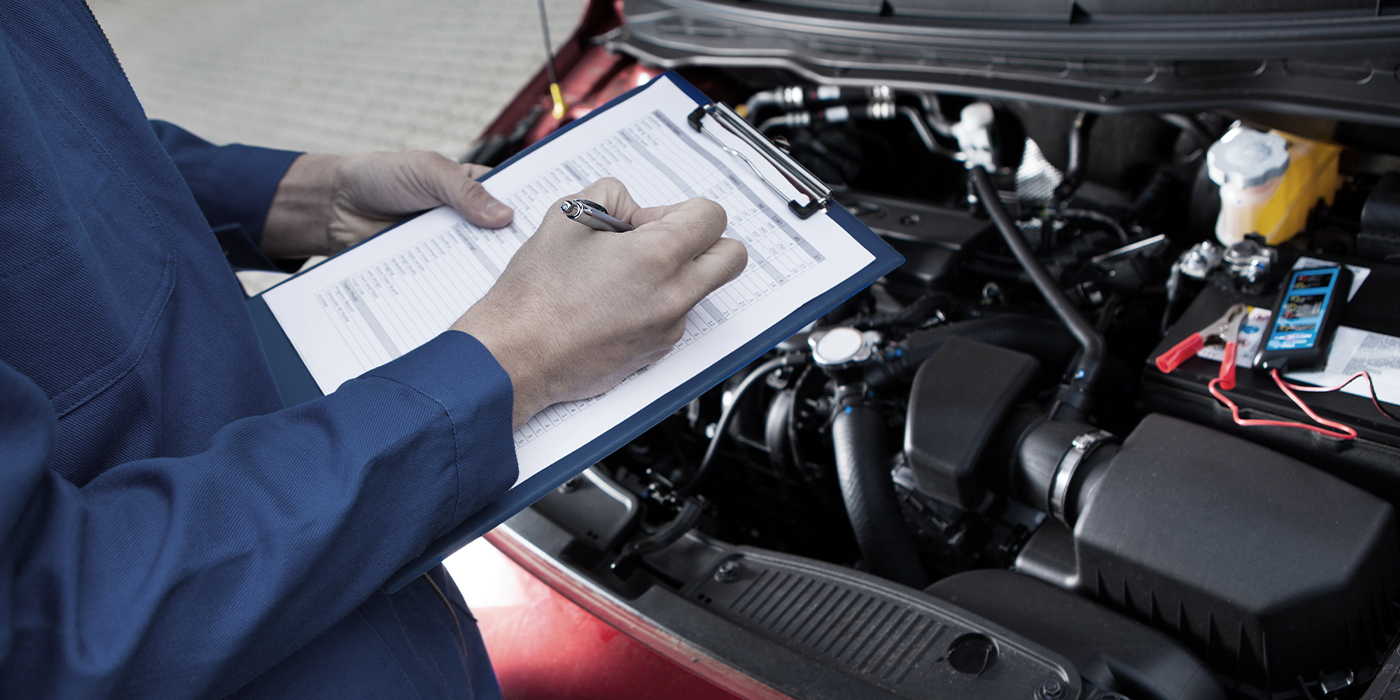Electric power steering (EPS) or electric power assisted steering (EPAS) systems continue to rise in popularity among auto makers. Diagnosing these systems can be a challenge. There are a few different types of EPS systems. Some mount the motors onto the steering column, on the pinion shaft against the steering rack, or on a secondary pinion gear on the other side of the steering rack. Despite their differences, they all operate with the same goal: assisting the driver whenever turning the steering wheel.
Let’s take a closer look at the sensors which make up these systems, and how they operate.
The Big Picture
EPS systems apply steering assist force based only on driver input. The system uses input data from a multitude of vehicle sensors to determine how much steering assist force is required. More often than not, the problem ends up being a faulty sensor, wire, or connection somewhere in the system.
The EPS system is connected to the powertrain CAN-BUS, and communicates with a number of systems. Figure 1 shows the powertrain CAN-BUS on a late-model Volkswagen. You can see that the EPS control unit is just one part of the network of sensors and control units.
This connectivity has some serious advantages. The EPS module isn’t connected directly to the wheel speed sensors, but the ABS control unit is able to pass that data along on the BUS. It’s important to understand just how interconnected systems can be on modern vehicles.
Steering Angle Sensor
The steering angle sensor is arguably the most important sensor in the system; that’s why it’s first on the list. It is located between the steering column and the wheel, and, in many cases, is actually one part of a sensor cluster. This is due to the importance of the data it produces. A faulty steering angle sensor reading could mean the difference between making it around a corner, or colliding with another vehicle. Having multiple sensors onboard to measure the same thing offers built-in redundancy, and allows the control unit to confirm the data in real time.
Sensor operation will vary from one manufacturer to the next, so it’s best practice to always check the OEM service information before you start with diagnosis. Let’s look at a 2019 VW Golf Alltrack as an example. The sensor consists of two rings: the absolute (outer) ring, and the incremental (inner) ring. Each ring is divided into segments, which are read by a light barrier set (Figure 2).
When looking at the data PIDs, you should see at least one steering angle sensor reading, measured in degrees. Sweep the steering wheel back and forth to confirm that the sensor is reading the change.
Steering Torque/Force Sensor
The second sensor on our list is the steering force sensor, also known as the steering torque sensor or steering moment sensor. This sensor is typically mounted on or inside the steering rack, and connected to the pinion gear (Figure 3). It is used to measure the amount of steering force that is being applied by the driver, then the control unit calculates how much steering assist force is needed, and applies it using the electric motor.
Again, sensor operation will vary from one manufacturer to the next, but we’ll use the 2019 VW Golf Alltrack again as an example. The steering input shaft and the pinion are connected by a torsion bar. A magnetic ring is affixed to the input shaft, and stators are affixed to the pinion (Figure 4). As the input shaft rotates, the torsion bar will twist, and the magnetic ring will move in relation to the stators (Figure 5). As a magnetic field is formed, the linear Hall sensors measure the electrical signal and calculate the amount of force being applied.
When looking at the data PIDs, you’ll likely see two separate force/torque readings, measured in lb.-ft. or Nm. Turning the steering should cause these PIDs to rise.
Other Sensors
The EPS control unit monitors a number of additional sensors to ensure that the system operates efficiently, and doesn’t overheat. This includes, but is not limited to, the speed and power draw of the electric motor, the temperature of the control unit and electric motor, wheel speed, and the engine speed. All of these PIDs and more can be monitored by a scan tool, and can be invaluable when it comes time to diagnose an EPS system which is misbehaving.
Tips & Tricks
Needless to say, you’ll need a scan tool capable of bi-directional control for this type of work, a simple code reader won’t cut it here. You’ll need to scan the system for stored DTCs, then bring up the real-time data (PIDs) from the onboard sensors.
Check the OEM service information to see if there is updated software for the modules; this may clear up the customer concern. You’ll also want to familiarize yourself with how each of the sensors work on that particular application. Pay close attention to any service bulletins or notes from the manufacturer. This can save you (and your customer) some serious headaches!
The steering angle sensor needs to be reset or recalibrated whenever the battery has been disconnected, an alignment has been performed or the steering wheel has been removed. Be sure to get the wheels pointed straight ahead after an alignment is performed. If this isn’t done right, the system can be led to believe that the vehicle is drifting out of the lane, and could try to make an unnecessary correction. Follow the OEM service procedures to the letter, as failing to properly calibrate the sensors could lead to trouble down the road.


